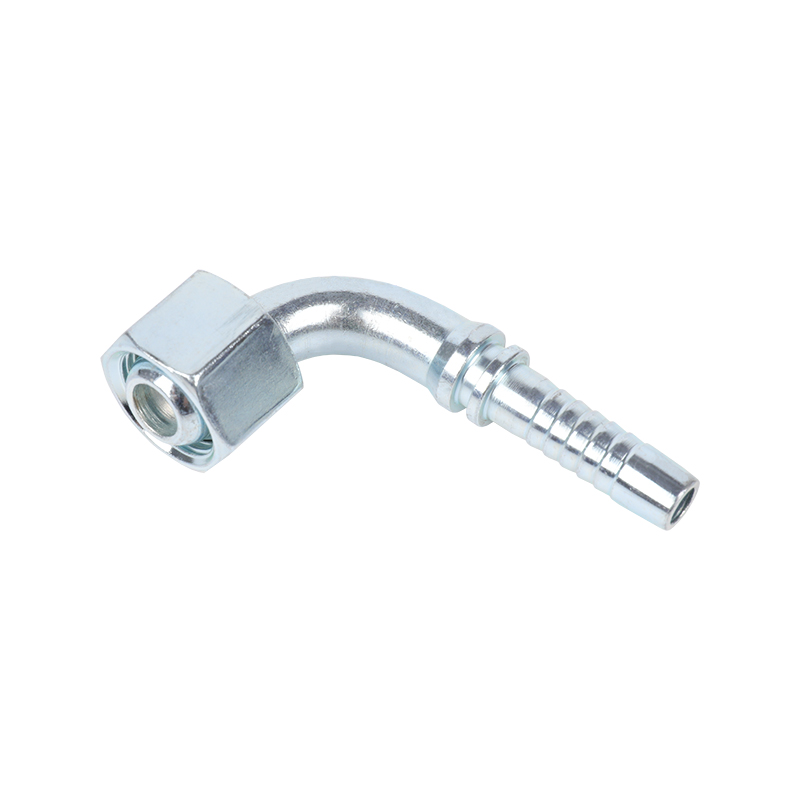What are the maintenance and inspection practices for steel hydraulic fittings to ensure their performance and reliability?
Author:admin Date:2023-06-05
To ensure the performance and reliability of steel hydraulic fittings, regular maintenance and inspection practices should be followed. Here are some common practices:
1.Visual Inspection: Regularly inspect the steel hydraulic fittings for signs of damage, such as cracks, corrosion, or leakage. Look for any loose connections or fittings that may require tightening.
2.Cleanliness: Keep the hydraulic fittings clean and free from dirt, debris, and contaminants. Use suitable cleaning methods, such as wiping with a lint-free cloth or using approved cleaning solutions, to remove any buildup that could affect performance.
3.Torque Checks: Periodically check the torque of the fittings to ensure they are properly tightened. Refer to manufacturer guidelines or specifications for recommended torque values. Over-tightening or under-tightening can lead to leaks or damage.
4.Sealing Integrity: Inspect the seals and O-rings in the hydraulic fittings for wear or damage. Replace any seals that are worn or compromised to maintain proper sealing and prevent leaks.
5.Pressure Testing: Perform periodic pressure testing of the hydraulic system to ensure there are no leaks or abnormalities. Follow safety procedures and use appropriate pressure testing equipment.
6.Lubrication: Depending on the specific fittings, lubrication may be required to ensure smooth operation. Follow manufacturer recommendations for lubrication intervals and use compatible lubricants.
7.Regular Maintenance Schedule: Establish a regular maintenance schedule for the hydraulic system, including inspections and any required maintenance tasks specific to the steel hydraulic fittings. Adhere to the recommended maintenance intervals provided by the manufacturer.
8.Compliance with Standards: Ensure that the steel hydraulic fittings meet industry standards and certifications for performance and safety. Follow any specific guidelines or regulations applicable to your industry.
It's important to note that maintenance practices may vary depending on the specific hydraulic system, application, and manufacturer recommendations. Consulting the product documentation, manufacturer guidelines, or seeking advice from hydraulic system experts can provide more specific maintenance and inspection instructions tailored to your equipment.
90 Degree DK Metric Female multi seal Hose Fitting 20191

Stainless steel hydraulic fittings are fittings made of stainless steel that are used to connect hydraulic hoses, tubes, and pipes in hydraulic systems. These fittings are designed to withstand high pressures and temperatures, making them suitable for use in a wide range of hydraulic applications. Some common types of stainless steel hydraulic fittings include: Adaptors: These fittings are used to connect two pipes, tubes, or hoses of different sizes or types. They can be male-to-female, male-to-male, or female-to-female. Couplings: These fittings are used to connect two hoses or tubes together. They can be permanent or reusable, depending on the type of coupling. Elbows: These fittings have a bent shape and are used to change the direction of the fluid flow. They can be 90-degree or 45-degree elbows, depending on the angle of the bend. Tees: These fittings have a T-shaped body and are used to split the fluid flow into two or more branches. Flanges: These fittings have a flat face and are used to connect pipes, tubes, or hoses to a flanged component, such as a valve or pump. Stainless steel hydraulic fittings are widely used in the hydraulic industry due to their corrosion resistance, strength, and durability. They are available in a variety of sizes and styles to suit different hydraulic systems and applications.


 English
English Deutsch
Deutsch











